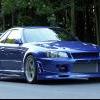I manually added the installation to boot.ini, but it won't boot, screen goes black with a cursor after a while and that's it. CTRL+ALT+DELETE does nothing.
I went into recovery console and did a bootcfg /rebuild, and it found two Windows installations, C: and G:, but adding those didn't help.
So I think when I'm booting the computer (not Windows) might be assigning drive letter G: instead of D: to the partition and that's why it won't boot.
I think I need to move additional hard drives, delete partitions until I can successfully boot into it, and that ought to lock that letter to that partition and I can add drives, partitions without affecting it.
I'm wondering if anyone has any ideas or can shed light on the whole business of assigning drive letters before Windows has booted? When I get a chance I'll try my idea and see if that works and post back.
















 Sign In
Sign In Create Account
Create Account

